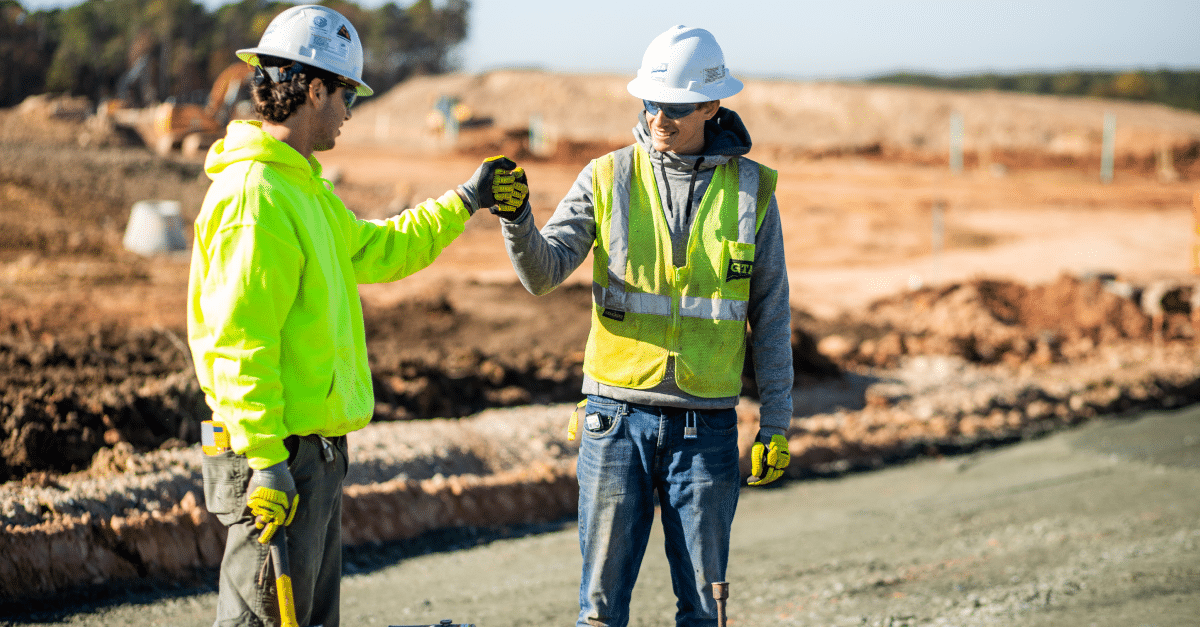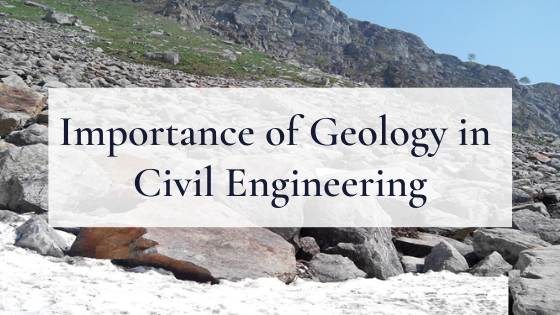The Ultimate Guide To Geotechnical Engineering For Construction Projects
The Ultimate Guide To Geotechnical Engineering For Construction Projects
Blog Article
Our Geotechnical Engineering For Construction Projects Statements
Table of Contents5 Easy Facts About Geotechnical Engineering For Construction Projects DescribedThe Only Guide to Geotechnical Engineering For Construction ProjectsThe smart Trick of Geotechnical Engineering For Construction Projects That Nobody is Talking AboutThe Ultimate Guide To Geotechnical Engineering For Construction ProjectsOur Geotechnical Engineering For Construction Projects Statements
During the examination, it is vital to drill at the called for deepness and the required number of holes as per the suggestion of the Canadian Structure Layout criterion. In some cases, the owner may conserve some Geotechnical Investigation expense yet wind up spending even more than the prepared for throughout the building price.The duties of the geotechnical specialist entail providing material testing for building and construction assistance. Geotechnical Engineering for Construction Projects. Geotechnical engineers analyse all the area test reports to ensure that construction is going on based on the project spec. Throughout building, a confirmatory examination for soil compaction is done on-site to ensure that no future settlement happens
After the concrete is poured -7 days and 28 days- tests are performed on concrete examples accumulated from the website to make sure that the concrete put fulfills the layout criterion. Asphalt core is taken after the Asphalt is laid and compressed to validate that it satisfies the style standard. All laboratory test records are evaluated by the Geotechnical Designer to ensure that it meets the task requirements.
Some Known Details About Geotechnical Engineering For Construction Projects

Geotechnical engineering plays an essential function in making sure the stability of construction tasks. Discover exactly how it affects design and general task success. Geotechnical design is a crucial branch of civil engineering that concentrates on comprehending the behaviour of planet materials, such as soil and rock. It includes analysing subsurface conditions to make certain that a structure's foundation or framework is stable and safe and secure.

For a reliable foundation and a smooth building and construction process, trust fund to provide the competence you require. Get in touch with to obtain specialist recommendations and geotechnical solutions tailored to your following task.
Geotechnical Engineering For Construction Projects Things To Know Before You Buy
When beginning on a land growth project, recognizing the ground under your feet is as vital as the structures you prepare to construct over it. Our Geotechnical Engineering team analyse the ground, ensuring it appropriates for the proposed advancement while giving you with the info called for to fulfill your project objectives.
Geotechnical Design considers the development of the ground, as it is the foundation for all jobs. Where frameworks need to be developed with respect to the ground conditions; ground conditions (e.g., soft ground) might need strengthening depending upon the size of the desired structure. Before structure, you need to learn about the groundwater, dirt This Site framework, and liquefaction chance of your land.
For sites that are not connected on the local authority framework extra site investigations would certainly be required to give technological inputs for on-site stormwater and wastewater. We have actually experienced Geotechnical Engineers based in each workplace, supporting your geotechnical needs across the country. Reach out to us to talk about how we can sustain your next project.
These records are tailored to fulfill the details demands of a project and consist of design parameters and advice for the construction of an array of synthetic frameworks. As providing working as a consultant solutions covering areas such as incline stability and load-bearing abilities for various materials, these designers embark on study and advancement tasks to enhance methodologies, devices, materials understanding and evaluation covering whole lifecycles.
The Best Strategy To Use For Geotechnical Engineering For Construction Projects

However, rates of pay typically boost as your understanding and abilities expand, with standards indicating a graduate beginning wage of between 18,000 and 28,000 per year in the UK. This rises to 26,000 to 36,000 with a few years of experience and after that reaching 40,000 to 60,000+ for senior, legal or master engineers.
With the best application it is possible to master the career and gain access to a tough yet fulfilling and crucial job. A rock hound would certainly require to retrain to become a geotechnical designer, although there is a lot of cross-over between the two professions, which can make this easier - Geotechnical Engineering for Construction Projects. Rock hounds require to have an understanding of soils, rocks and other materials from a clinical viewpoint, while geotechnical designers story their understanding of matters such as dirt and rock auto mechanic, geophysics and hydrology and apply them to design and environmental projects
When beginning, these designers will certainly have a tendency to deal with less intricate projects, building up knowledge and experience prepared for even more difficult job later. Geotechnical designers tend to be experts in particular areas as they expand in experience, focusing on certain facilities such as railways, roads or water. These designers also work with renewable resource, offshore and onshore oil and gas, nuclear power, and more.
Getting My Geotechnical Engineering For Construction Projects To Work
The moment required to become a geotechnical engineer depends on where you are based, where you study and what degree of education you intend to acquire before going into the work environment. Are you going to check out an apprenticeship, take a college level or deal with in the direction of a Master's or PhD? Nonetheless, generally-speaking it takes 3-4 years to reach the fundamental needs to start a job as a geotechnical designer.
These operations enable specialists to assess a host of dirt auto mechanics including weight, porosity, void-to-solid fragment ratio, permeability, compressibility, maximum shear stamina, bearing capability and deformations. If the structure calls for a deep structure, designers will certainly use a see this cone penetration test address to estimate the quantity of skin and end bearing resistance in the subsurface.
When assessing an incline's equilibrium of shear tension and shear toughness, or its capability to withstand and undergo activity, rotational slides and translational slides are frequently taken into consideration. Rotational slides fall short along a rounded surface, with translational slides taking place on a planar surface area. A specialist's goal is to establish the problems at which an incline failure can happen.
Often, searchings for suggest that a website's dirt must be dealt with to enhance its shear strength, rigidity and leaks in the structure prior to style and building. When it comes time to lay out foundation strategies, specialists are significantly concentrated on sustainability, even more particularly exactly how to decrease a structure's carbon footprint. One technique has been to change 20 percent of a foundation's cement with fly ash, a waste product from coal fire nuclear power plant.
Report this page